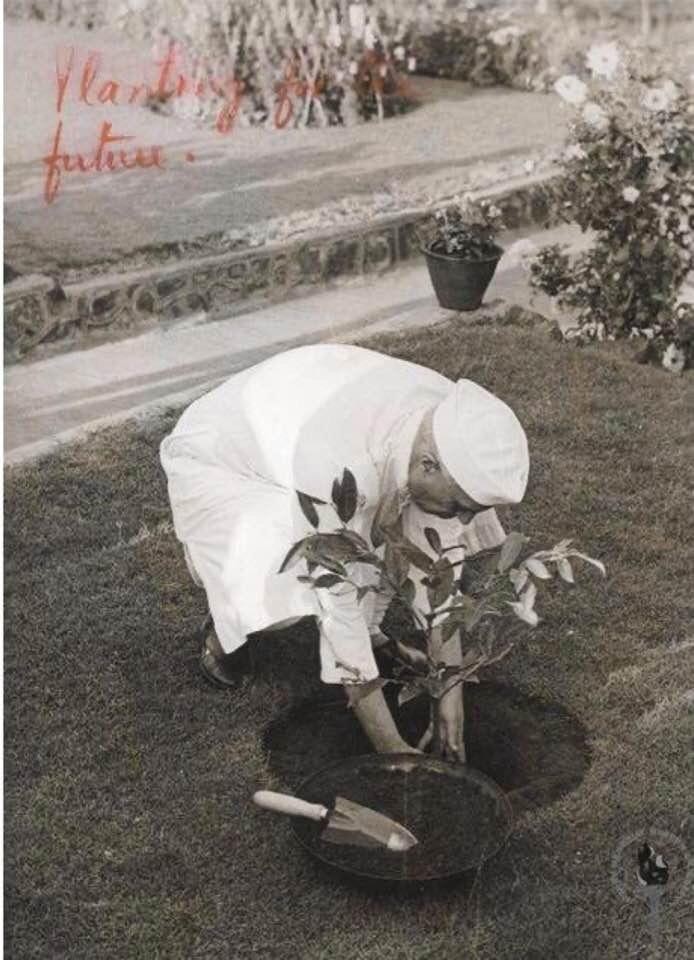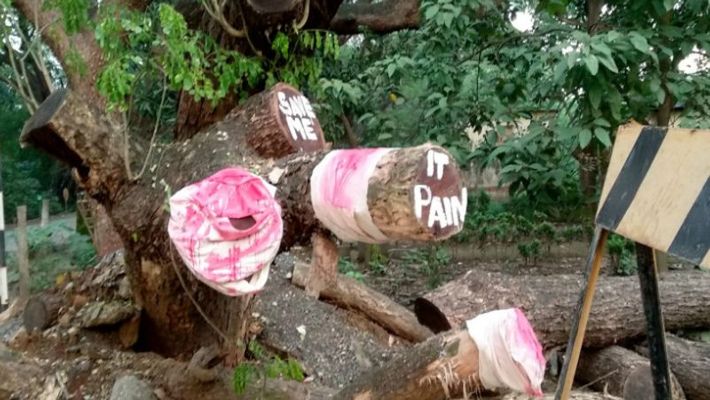Top Court asks Maharashtra Govt to not cut more trees
 NEW DELHI/MUMBAI :The Supreme Court, in a special hearing on October 7, 2019, ordered the Brihanmumbai Municipal Corporation (BMC) to halt the felling of trees in the Aarey forest and asked status quo to be maintained in the area. Aarey, situated in Goregaon, is famous among nature enthusiasts for being the green lungs of the city.
NEW DELHI/MUMBAI :The Supreme Court, in a special hearing on October 7, 2019, ordered the Brihanmumbai Municipal Corporation (BMC) to halt the felling of trees in the Aarey forest and asked status quo to be maintained in the area. Aarey, situated in Goregaon, is famous among nature enthusiasts for being the green lungs of the city.
The court also ordered the authorities to release people, arrested for protesting against the felling of trees.It had admitted a Public Interest Litigation based on a letter sent to the court by a law student Rishav Ranjan, seeking a stay on the cutting of trees and the releasing of protestors.
The top court’s ruling came after the Maharashtra government said it had already cut down the trees it needed to for its plan to clear 33 hectares of Aarey land for the construction of a car shed and depot.
“We respect the order of the Hon’able Supreme Court passed today. No future tree-felling activity at the car shed site in Aarey Milk Colony will be undertaken. Other works, including clearing of already felled trees, will continue,” the statement read.
Interestingly, in April this year, the Supreme Court had dismissed a public interest litigation (PIL) filed by Aarey Conservation Group seeking a direction to the Maharashtra government to not proceed with the metro rail car shed plan in the Aarey forest and look for an alternative site.
The Supreme Court had then said the options to look for an alternative site had been exhausted by the Mumbai Metro Rail Corporation Ltd (MMRCL). The alternative sites were found unviable, the court had then agreed with the MMRCL.
The matter has taken a full circle now. The Top Court order, however, came after the Maharashtra government said it no longer needed to cut trees for the metro car shed. This means the government has got what I might have wanted before the Supreme Court pronounced its order.
The MMRCL also said that construction of the buildings would continue as planned, confirming the state government’s earlier interpretation of the top court order that only said “status quo (is) to be maintained… with respect to cutting of trees”.
“Following the decision of the Hon’able High Court on 4th October upholding the permission of the Tree Authority the felling of 2,185 trees was undertaken on October 4 and October 5, 2019 and as on date 2,141 trees have been felled. These will be cleared from the site and subsequent construction activities will be carried out,” a MMRCL spokesman added.
Presence of the Aarey forest makes Mumbai one of the unique metropolises of the world for having a true jungle within the premises of a jungle of concrete. This is not the first time that Aarey has paved way for progress – it has been the main thrust of arguments for felling trees — of Mumbai. But first, a brief recount of how Aarey forest or Aarey Milk Colony came up in Mumbai.
At the time of Independence Mumbai was the expanding at a breakneck pace. It was the dream destination for economy pushers. History tells us that a city thrives on the supply of agricultural produces – most of which can be transported from longer distance but some had to come from local site. Milk is one such commodity.
Aarey Milk Colony was the result of this requirement. It came up on the land given to the department of dairy development. Curiously, cattle rearing is allowed only on a small portion of the land under the Aarey forest.
The Aarey Milk Colony was envisioned by Dara N Khurody, the less famous colleague of Verghese Kurien. The two shared Ramon Magsaysay Award for their work in 1963. The Aarey Milk Colony was established in 1949 and was inaugurated by then Prime Minister Pandit Jawaharlal Nehru in 1951 by planting a sapling on the occasion.
This photograph of Pandit Jawaharlal Nehru planting a sampling on March 4, 1951 in the Aarey forest is being circulated on social media to target the BJP over felling of trees in the jungle for construction of a Mumbai metro rail car shed. (File photo)
But that “future” had been cut before as well. In 1977, the Film City – now one of the identities of Mumbai – was carved out of the Aarey forest. Around 200 acres were cleared for establishing the Film City.
The Maharashtra government has argued that in the current plan for construction of metro rail car shed, only 30 hectares of about 1,300 hectares that make up the Aarey forest would be cleaned up. The Film City required nearly seven times more land.
(With Inputs From Mumbai Bureau ).

